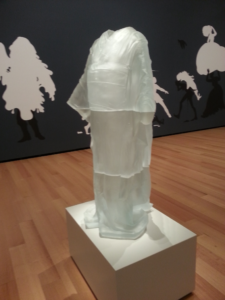

Citing this study because of the link between the micro trauma induced by acupuncture needles and the HPAA (hypothalamic-pituitary-adrenal axis), closely related to autonomic balance and stress response. This could, obviously, account for some of the nonspecific effects of acupuncture.
http://www.ncbi.nlm.nih.gov/pubmed/23939821
http://www.ncbi.nlm.nih.gov/pmc/articles/PMC3857130/
Endocr Rev. 2013 Dec;34(6):827-84. doi: 10.1210/er.2012-1092. Epub 2013 Aug 12.
Key role of CRF in the skin stress response system.
Slominski AT1, Zmijewski MA, Zbytek B, Tobin DJ, Theoharides TC, Rivier J.
Author information
Abstract
The discovery of corticotropin-releasing factor (CRF) or CRH defining the upper regulatory arm of the hypothalamic-pituitary-adrenal (HPA) axis, along with the identification of the corresponding receptors (CRFRs 1 and 2), represents a milestone in our understanding of central mechanisms regulating body and local homeostasis. We focused on the CRF-led signaling systems in the skin and offer a model for regulation of peripheral homeostasis based on the interaction of CRF and the structurally related urocortins with corresponding receptors and the resulting direct or indirect phenotypic effects that include regulation of epidermal barrier function, skin immune, pigmentary, adnexal, and dermal functions necessary to maintain local and systemic homeostasis. The regulatory modes of action include the classical CRF-led cutaneous equivalent of the central HPA axis, the expression and function of CRF and related peptides, and the stimulation of pro-opiomelanocortin peptides or cytokines. The key regulatory role is assigned to the CRFR-1α receptor, with other isoforms having modulatory effects. CRF can be released from sensory nerves and immune cells in response to emotional and environmental stressors. The expression sequence of peptides includes urocortin/CRF→pro-opiomelanocortin→ACTH, MSH, and β-endorphin. Expression of these peptides and of CRFR-1α is environmentally regulated, and their dysfunction can lead to skin and systemic diseases. Environmentally stressed skin can activate both the central and local HPA axis through either sensory nerves or humoral factors to turn on homeostatic responses counteracting cutaneous and systemic environmental damage. CRF and CRFR-1 may constitute novel targets through the use of specific agonists or antagonists, especially for therapy of skin diseases that worsen with stress, such as atopic dermatitis and psoriasis.

